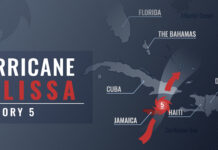
Originally posted July 18, 2025.
In January 2024, Lucas Laursen explained in IEEE Spectrum that “satellites are becoming the new cellphone towers.” He wrote:
Starlink sent and received texts over a 4G/LTE connection between mobile phones via its latest generation of satellites, called v2mini, for the first time this month, following similar projects from Amazon, Apple, AST SpaceMobile, Huawei, and Lynk Global. Starlink—the satellite constellation operated by SpaceX—will offer text messaging to subscribers of at least eight different mobile-network operators around the world and may offer voice and data coverage without the need for the ground terminals its customers now use in “coming years,” Starlink’s U.S. partner T-Mobile said in a statement.
The Starlink achievement is the latest example of how satellites and cellular base stations are converging. A handful of companies are exploiting cheaper satellite fabrication and launch costs, as well as adapting existing technologies such as beamforming, to bridge the several hundred kilometers between mobile phones and orbiting satellites. Among the many new wrinkles those companies have to iron out is the fact that for the first time, the towers themselves are the mobile component of the network: Low Earth orbit (LEO) satellites move at tens of thousands of kilometers an hour, so they have little time to communicate with any one mobile phone on the Earth’s surface.
Originally posted on June 27, 2025.
You know Your Survival Guy has been a fan of satellite phones as a backup communications device for decades. Now, T-Mobile is working with Starlink to make almost everyone’s smartphones capable of some satellite connectivity. The program is called T-Satellite, and uses signals beamed from Starlink satellites on bandwidth owned by T-Mobile to connect smartphones almost anywhere in the United States.
With over 650 satellites, T-Mobile and Starlink will serve 500,000 square miles of the U.S. that aren’t currently covered by any wireless company. T-Mobile explains:
- T-Satellite is available to anyone on any carrier. Other carrier services are limited to their customers only, to the extent they are available.
- Our partner, Starlink, is the undisputed leader in satellite technology. With 650+ satellites in orbit, it is the world’s largest satellite-to-mobile constellation. Others have a small fraction of that many satellites in orbit.
- Our service uses T-Mobile network technology so that T-Satellite automatically connects to most smartphones launched in the last four years – regardless of OS. Other services don’t use any carrier network technology, don’t auto-connect, and are restricted to a specific OS and fewer devices.
- We worked closely with our mobile operating system and handset partners to make T-Satellite the default satellite connection on their smartphones.
- Our service is live in beta today with tens of thousands of customers using it now – and more being admitted all the time. Other carrier services hardly even exist and have no customers.
- We have a roadmap to go beyond text messaging to deliver picture messaging, data services and voice calling as well as roaming with other Starlink partners around the globe and coverage in international waters in the future.
For now, the service is just for messaging, and T-Mobile warns that the messages may take a little time to go through. If you’re not a T-Mobile customer, you can still get the services if you use AT&T or Verizon, for a fee of about $10/month for a limited time.
Action Line: Your Survival Guy isn’t pitching you on T-Mobile’s service, but it’s important to have reliable communications in any disaster situation. If you haven’t already built in some redundancies to your communications, there’s never a better time than today. If your cell network goes down, you want to have some other way to communicate. Land lines? Smoke signals? Carrier pigeons? For Your Survival Guy, satellite communications are the surest way to provide yourself with a backup. Whether it’s Iridium, T-Satellite, or any other provider. Tell me what your family is relying on for backup communications by emailing me at ejsmith@yoursurvivalguy.com. And click here to subscribe to my free monthly Survive & Thrive letter.



